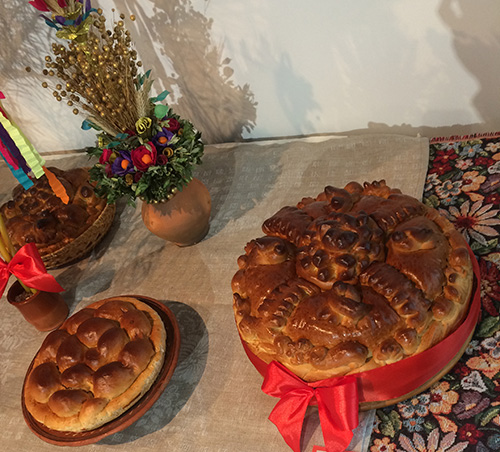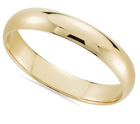 Several Eastern-European countries have a tradition of baking and sharing wedding bread. By the way, this is one of the few old wedding customs still in use today. Such bread is made in Ukraine, Bulgaria, Belarus, Romania, and Russia. Each of them has their own curious wedding rituals connected to the wedding bread called “korovai”, “karavai”, or “kravai”. This tradition’s origin goes back to the times of Kyivan Rus (the late 9th – mid-13th century).
Several Eastern-European countries have a tradition of baking and sharing wedding bread. By the way, this is one of the few old wedding customs still in use today. Such bread is made in Ukraine, Bulgaria, Belarus, Romania, and Russia. Each of them has their own curious wedding rituals connected to the wedding bread called “korovai”, “karavai”, or “kravai”. This tradition’s origin goes back to the times of Kyivan Rus (the late 9th – mid-13th century).
Wedding bread in Ukraine
The sweet pastry symbolizes the unity of two loving hearts and two families. From ancient times, bread was a symbol of wealth and prosperity, and the round shape of the loaf was associated with the Sun (the main deity of pagans). So, korovai was and still is considered sacred. That’s why there are certain rituals that dictate every step of its making and eating.
For instance, the woman or women who make the dough and bake the bread should be happily married and have children. When the korovai is ready, it is covered with a special embroidered towel (another sacred item in Ukrainian culture. You can read about it here: Embroidered wedding towel or rushnyk is a significant part of Ukrainian wedding) and is hidden from everyone until the wedding ceremony, when it is put on the same rushnyk to be served to the wedding guests. In Ukraine, korovai is usually served with a tiny bowl of salt, so you take a piece and dip it in salt before eating.

Comparatively simple wedding korovai and other pastry. Also, you can see traditional wedding table decorations
The wedding bread is used by the bride and groom’s parents to bless the couple. Later, the korovai is divided among the guests by tearing pieces rather than cutting. Each person must eat a piece – if you refuse, it is considered an offend and disrespect to the newlyweds.
The top of Ukrainian wedding bread is always adorned with different shapes, also made of dough (flowers, leaves, birds, wheat ears, grapes, guelder rose berries, and many other elements). Each symbolizes something.
Wedding bread in Bulgaria
In Bulgarian culture, bread plays a great role as well. But they make a pull-apart pastry rather than a loaf. At the wedding party, the bride and groom’s mothers take pieces of kravai and feed them to the couple with honey to show that their children-in-law are welcome to the family and beloved. Also, it symbolizes the wish of happily ever after for the new couple.
There is also a tradition to determine the head of the newly created family with a help of the wedding bread. A large loaf is held above the newlyweds’ heads and the bride and groom pull each on their end. When the loaf tears apart, the one who got a bigger piece is fated to become in charge of the family decisions. Sure, it’s kind of just a game to entertain the audience, but many people consider it a sign.
Wedding bread in Belarus
The wedding traditions regarding karavai in Belarus are similar to Ukrainian. The bride and groom’s parents also bless their children with a loaf of wedding bread, specifically made for this occasion. But karavai and salt are complemented in Belarus with a honey-based beverage called “medovukha”. The newlyweds also tear some bread, dip it in salt, and eat.
Wedding bread in Romania
Romanian wedding bread isn’t round-shaped like other Slavic korovai loaves. It has a ring shape and is braided. The bridal bread is called “colacul miresei” here.
This sweet pastry is a part of a few wedding rituals in Romania. For example, the bride’s godmother breaks the loaf above the bride’s head, she tears pieces and gives them to the wedding guests. Sometimes, jam is added to the bread. Also, the guests receive some homemade beverage with the colacul miresei.
Wedding bread in Russia
Russian traditions regarding the karavai are very similar to Ukrainian and Belorussian. In Russia, the wedding bread is also made by women who are happily married and have healthy children. The bread is served with salt as well. Though, the dividing of karavai can be a bit different. For instance, there is a tradition to give the upper part of the loaf to the newlyweds, the middle part goes to the wedding guests, the bottom to musicians at the wedding party, and the decorations are given to unmarried girls at the wedding.
Another Russian tradition is to pay for the pieces of wedding bread. Each guest gets their fair share and gives a symbolic amount of money to a piggy bank for the bride and groom. What’s left after everybody at the wedding received their piece is donated to the poor.
Also, there is a famous Russian wedding tradition that includes karavai – the bride and groom bite the loaf trying to get as big a piece as possible. Whoever gets the biggest bite will be in control in the future family.

